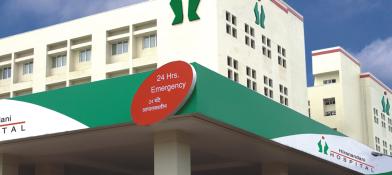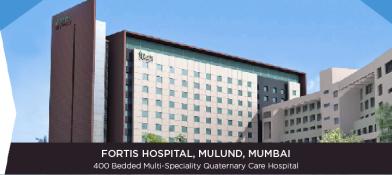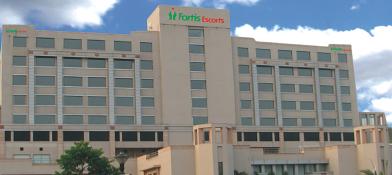Coronary Angiogram
What is a Coronary Angiogram?
- A coronary angiogram is a particular X-ray test. It shows whether an individual’s coronary arteries are narrowed or blocked.
- The coronary arteries supply cardiac muscle with blood. They can become clogged from an accumulation of cholesterol, cells, or other substances (plaque). This can lessen the blood flow to the heart.
- If plaque in a heart artery breaks, a blood clot forms which further obstructs the flow of blood through the narrowed artery. If the blood flow is entirely blocked to a portion of the cardiac muscle, it can result in a heart attack.
- An angiogram can aid in showing where and the percentage of arteries are blocked. This information aids the team of healthcare professionals in selecting what treatment an individual needs.
Why is coronary angiogram done?
A coronary angiogram is conducted to look for narrowed/clogged blood vessels in the heart. Healthcare team may advice a coronary angiogram if an individual has:
- Pain in the chest (angina).
- Pain in the chest, jaw, arm, or neck which can't be explained by other tests.
- Problems related to blood vessel.
- A heart problem an individual is born with, known as congenital heart defect.
- Irregular results on an exercise stress test.
- Chest injury.
- Heart valve disease that requires surgery.
An angiogram typically is not done until other non-invasive tests are utilised to check the heart. Such tests might comprise an electrocardiogram, an echocardiogram, or a stress test.
What happens before the procedure?
A coronary angiogram is performed in a hospital or medical center in a room known as a catheterization laboratory, which is often called a cath lab. Prior to the test, healthcare team talks to individual about the medicines he/she takes and allergies.
Individuals dress in a hospital gown and void his/her bladder, if required. Do not put on contact lenses, eyeglasses, jewellery, or hairpins.
The care team assesses vitals such as blood pressure and pulse. Sticky patches, referred to as electrodes, are placed on the chest and sometimes the arms or legs. The patches records heartbeat. They stay on for the overall test and for a while after.
A healthcare professional may shave a small quantity of hair from the area where a flexible tube, known as catheter, will be inserted. The site is cleaned and then numbed.
What happens during the procedure?
During a coronary angiogram, an individual lies on his/her back on a table. Straps cross the chest and legs to keep them safely on the table.
A medical professional places an IV into a vein in the forearm or hand. A medicine known as a sedative pass through the IV. The medicine aids individual feels relaxed and calm during the test or treatment, and it may make you feel sleepy.
The amount of sedation an individual needs depends on the reason for the coronary angiogram and his/her complete health. An individual may be fully awake or lightly sedated. Or he/she may be given a combination of medicines to put him/her in a sleep-like state. This is called general anaesthesia.
The doctor makes a minor cut, called an incision, to reach an artery. This cut may be done in the leg or wrist. A fine, flexible tube referred to as a catheter is placed in the artery as well as guided to the heart. Individuals shouldn't feel it moving through his/her body.
Once the catheter is in the correct position, dye travels through the tube into the heart's blood vessels. X-ray images are taken to observe how the dye moves. These images are known as angiograms. If the dye doesn't travel through a blood vessel, it could mean the site is obstructed or narrowed.
An uncomplicated coronary angiogram may take 60 minutes or longer to complete. It depends on whether other heart tests or treatments are done simultaneously. If a blockage is detected, a balloon may be passed via the catheter and expanded to dilate the artery. A mesh tube referred to as a stent may be placed to let the artery remain open.
When the test/treatment is conducted, the catheter is taken out from the body. A clamp or small plug may be utilised to close the small incision.
What happens after the procedure?
Post a coronary angiogram, individuals are taken to a recovery area. A healthcare team watches you and checks vitals such as heartbeat, blood pressure, and levels of life saving gas - oxygen.
If the catheter was placed in the leg area, an individual must lie flat for several hours. This aids in preventing bleeding. The site where the catheter was placed may feel sore for a while. Individuals may have a bruise and a small bump.
Some individuals go home the same day post completion of a coronary angiogram. Whereas others stay in the hospital for a day or more, based on the results of the test.
What type of results does individual obtain and what do the results mean?
Normal results: Healthcare provider may tell individual that he/she doesn’t have anything clogging their blood vessels and his/her heart’s getting sufficient blood.
Abnormal results: Something may be obstructing individual's coronary artery or arteries. Healthcare provider can tell him/her which arteries have a block in them and where, as well as how bad they are.
Risks of Coronary Angiogram
A coronary angiogram comprises the blood vessels and heart, so there are few risks. But major complications are unusual. Possible risks and complications may comprise:
- Injury to blood vessel
- Excessive bleeding
- Heart attack
- Infection
- Irregular heart rhythms, referred to as arrhythmias.
- Renal damage due to the dye utilized during the test.
- Reactions to the dye or medications utilised during the test.
- Stroke.
To summarise, a coronary angiogram is a test that takes X-ray pictures of the heart’s arteries as well as the vessels that supply blood to the heart. It may be done to investigate angina symptoms, or during or after a heart attack. It's sometimes called ‘cardiac catheterisation’.
































